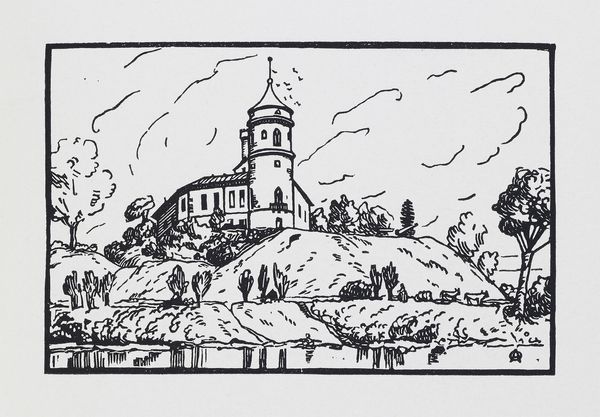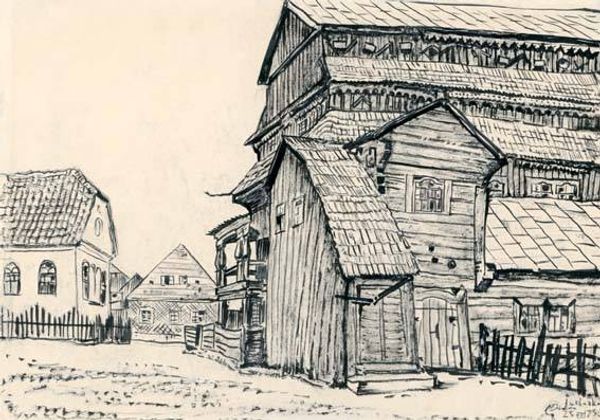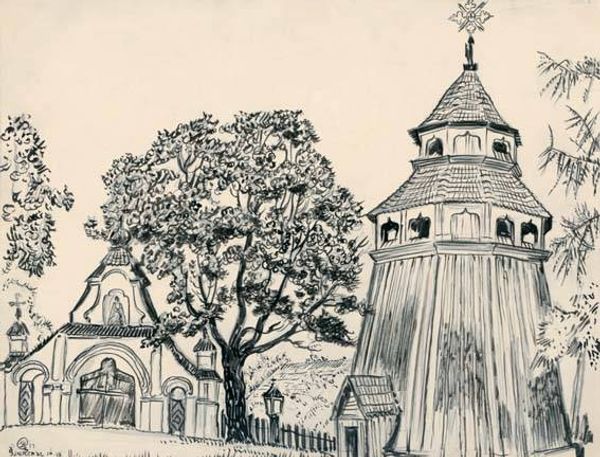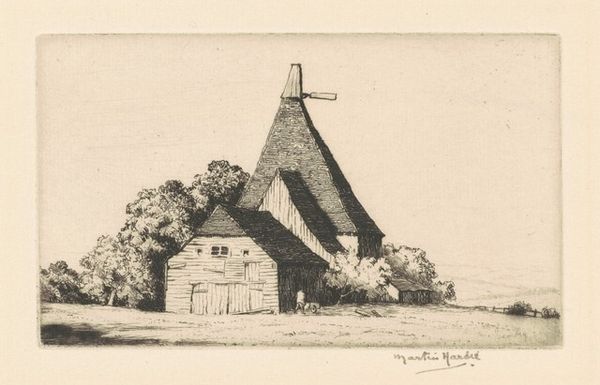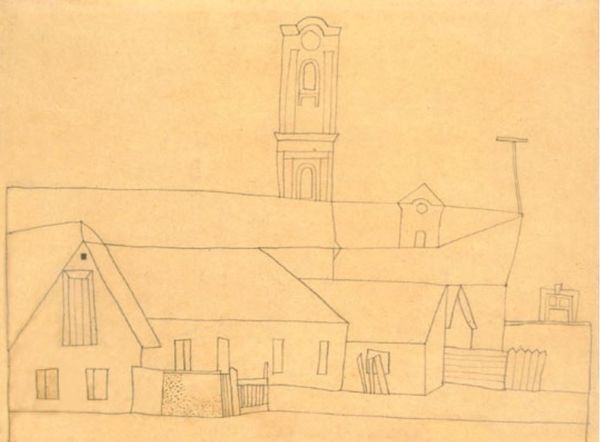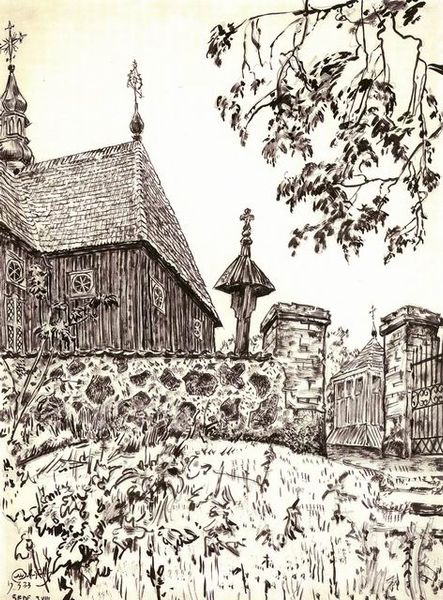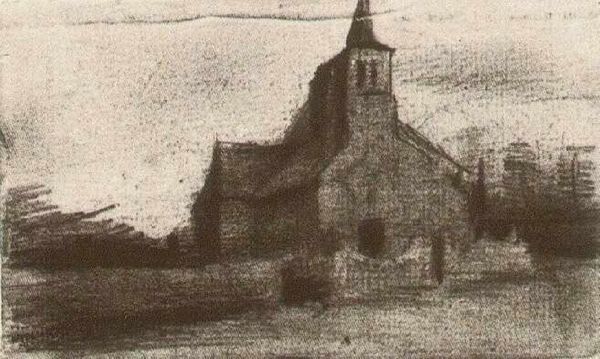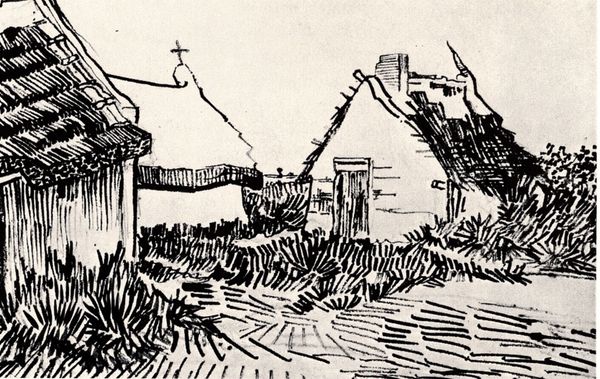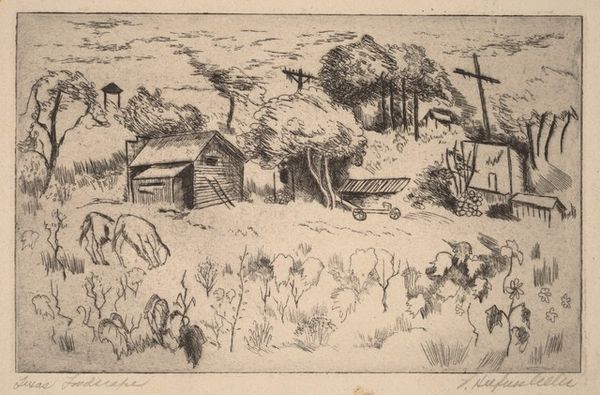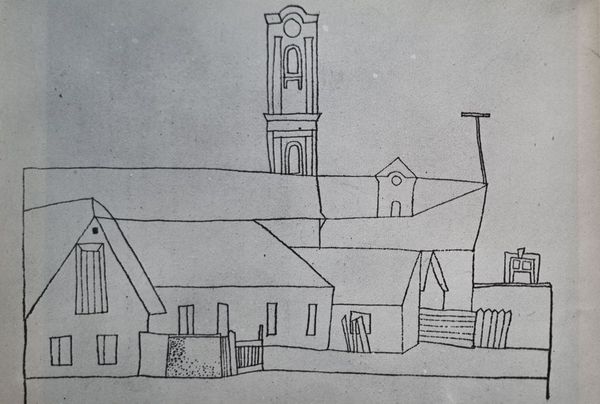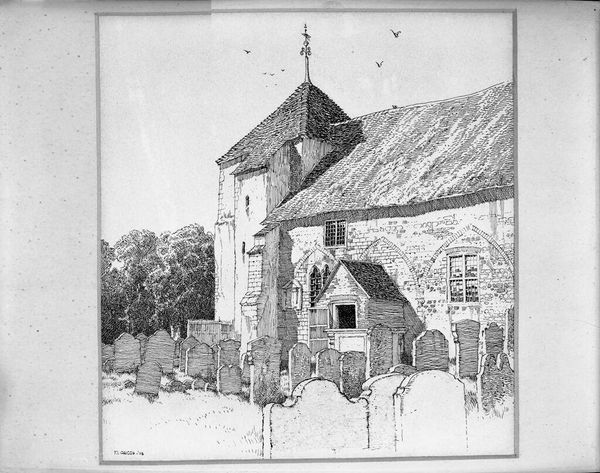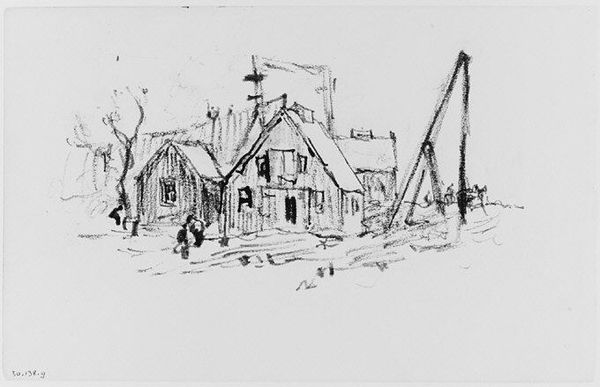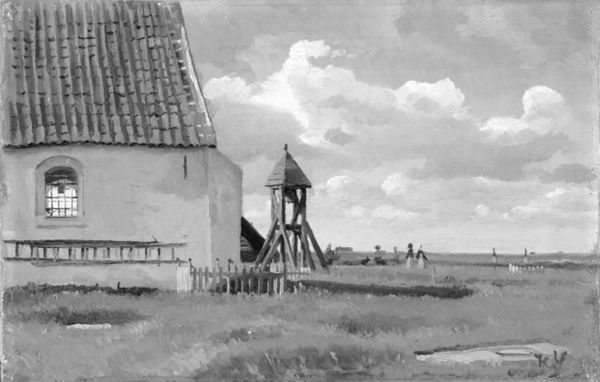
drawing, ink, architecture
#
drawing
#
landscape
#
ink
#
modernism
#
architecture
Copyright: Mstislav Dobuzhinsky,Fair Use
Editor: Mstislav Dobuzhinsky’s 1933 ink drawing, "Seda. Church.," presents a seemingly simple architectural landscape. But the cross atop the church, repeated on the bell tower, creates a really striking image of faith, a statement almost. What do you see in this piece? Curator: I see a layered cultural narrative. Dobuzhinsky, influenced by Modernism, uses the church and bell tower not merely as structures but as potent symbols. Notice how the linear perspective draws the eye upward, toward those crosses you mentioned. They are anchors, connecting earthly architecture with celestial aspiration. Editor: So, it's more than just a building? The church seems to almost dominate the landscape in that sense? Curator: Precisely! Churches in art often function as visual shorthand for community, history, and faith. This church, nestled within its rural setting and guarded by a humble wooden fence and populated with people in the foreground, becomes a vessel of cultural memory. Consider, too, the emotional weight of religious symbols in a landscape undergoing rapid modernization and, eventually, Soviet occupation. Do you think that might be an intended comment of resilience? Editor: It gives me something new to consider, thinking about it that way. And the bell tower being separate adds another layer, almost a call to attention outside of the main structure. I see what you mean by layers of meaning. Curator: Exactly. It’s a complex image, using seemingly simple architectural and religious imagery as symbols. Visual symbols function as cultural memory, distilling the psychological and anthropological weight of place and history into something immediately accessible. It almost begs the question - what values stand the test of time, especially during modernization or foreign regimes? Editor: It's interesting how such a straightforward drawing opens up so many avenues for interpretation when considering its cultural and historical context. Curator: Indeed! And how that straightforward quality actually emphasizes what’s culturally and historically important.
Comments
No comments
Be the first to comment and join the conversation on the ultimate creative platform.
